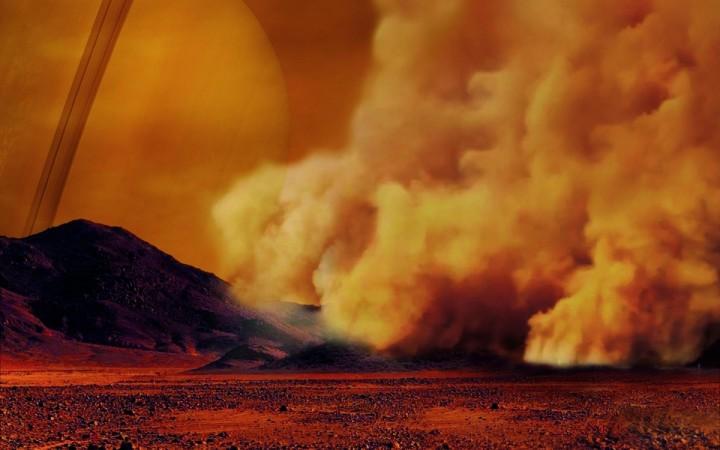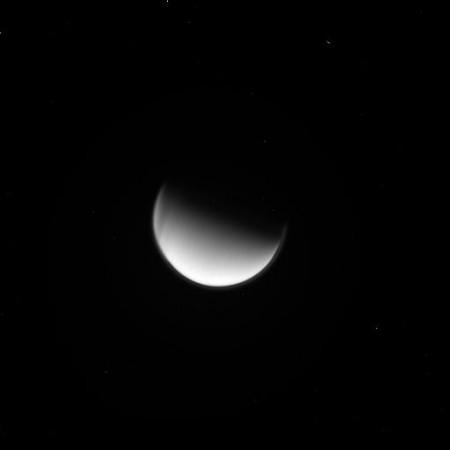
Titan, the second largest moon in the solar system, has been found to have undergone bouts of tough weather in the past. Giant dust storms were found to have ravaged the moon's equatorial region and this makes Titan only the third body in the Solar System to have dust storms—the other two being Earth and Mars.
According to a report from NASA's Jet Propulsion Laboratory (JPL), data taken from the Cassini spacecraft that orbited Saturn for 13 whole years until last year, shows that there is a new evidence of giant dust storms. Astronomers are still studying the data that the spacecraft collected through its mission.
Cassini data, says NASA, is helping astronomers better understand Titan's dynamic environment. "Titan is a very active moon," said Sebastien Rodriguez, of the Université Paris Diderot, France, and the paper's lead author.

Scientists previously knew that the moon was home to complex geology exotic hydrocarbon cycle, explained Rodriguez. "Now we can add another analogy with Earth and Mars: the active dust cycle, in which organic dust can be raised from large dune fields around Titan's equator."
Titan, in the way it is, has a few parallels to Earth in terms of geology. For example, it is the only known moon in the entire Solar System where there is a substantial atmosphere and so far, the only place apart from Earth where there is, in fact, surface liquids still stable and present.
The liquid on Earth is water and it is the most abundant one here, but Titan's surface is primarily methane and ethane flowing through liquid reservoirs. The hydrocarbons evaporate, form clouds, condense, and rain back down in a cycle that is similar to the water cycle on Earth, explains NASA.
As a result of an active rain and evaporation cycle, the moon actually goes through seasons as well. The seasons are so much like Earth's that around the equinox—when the Sun crosses Titan's equator—massive clouds form around the equatorial, tropical regions and which then bloom into powerful methane storms, explains NASA.

Cassini is said to have observed several such storms during of its numerous Titan flybys.
Rodriguez and team first reportedly spotted three higher than usual equatorial brightening events in infrared pictures shot by Cassini during Titan's 2009 northern equinox. It was first thought to be large clouds of methane, but further investigation revealed that it was much more.
"From what we know about cloud formation on Titan, we can say that such methane clouds in this area and in this time of the year are not physically possible," explained Rodriguez. That is because the convective methane clouds that can develop in this area, he says, during this period of time would contain huge droplets and must be at a very high altitude. Higher than the 10 km that modelling says these new features were found.
Also, modelling demonstrated that the features found must be off the ground, but remain close to the surface. They were located directly above the dune fields around Titan's equator, and the only remaining explanation for them was that they were clouds of dust raised from the dunes below.
"We believe that the Huygens—Cassini—probe, which landed on the surface of Titan in January 2005, raised a small amount of organic dust upon arrival due to its powerful aerodynamic wake," said Rodriguez.
"But what we spotted here with Cassini is at a much larger scale." He goes on to explain that the near-surface wind speeds required to cause a dust storm of this magnitude would have to be incredibly strong, "about five times as strong as the average wind speeds estimated by the Huygens measurements near the surface and with climate models."
The study was published in the journal Nature Geoscience.

















